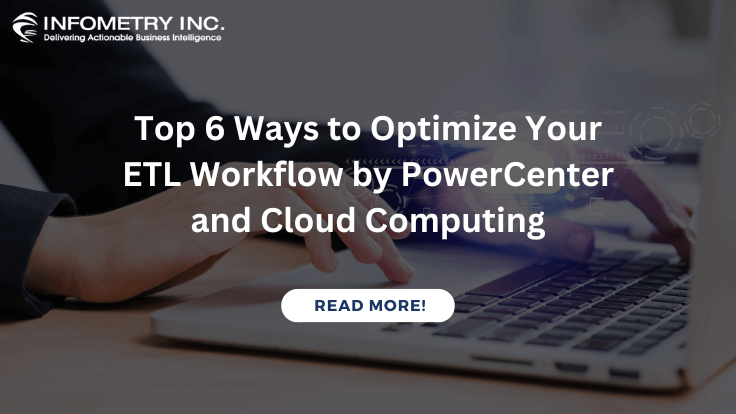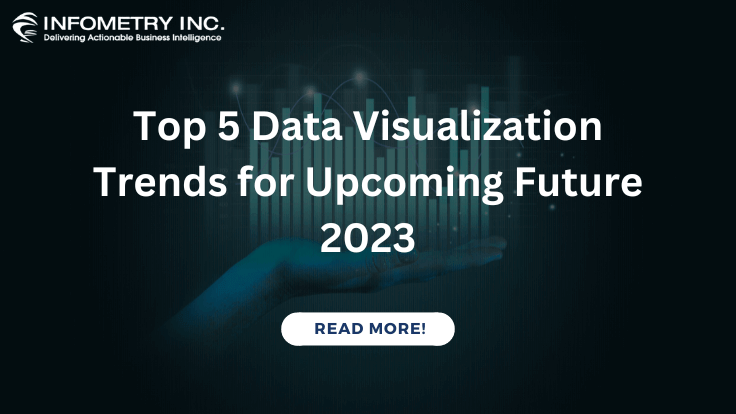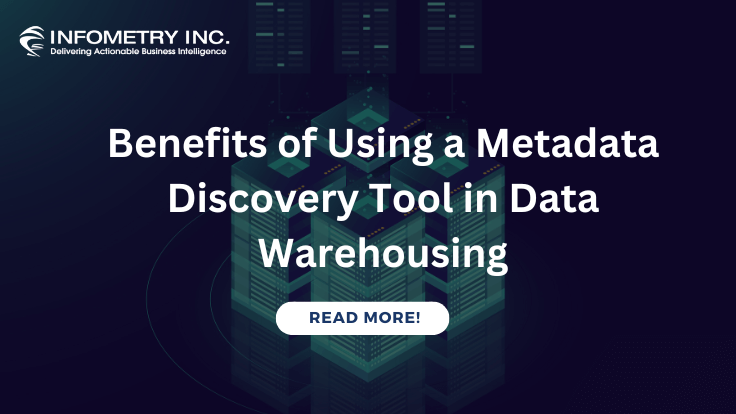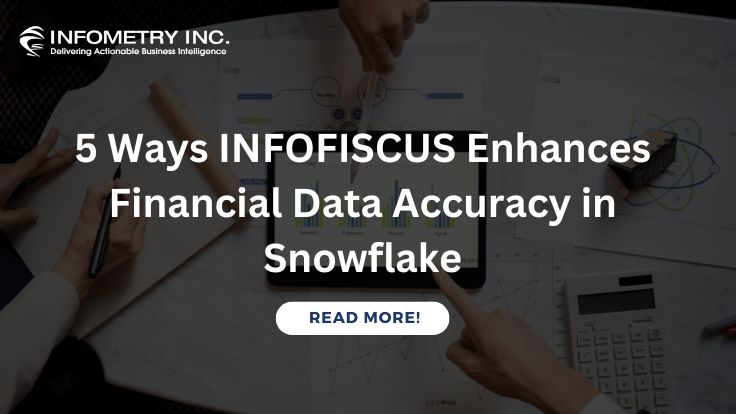
Top 6 Ways to Optimize Your ETL Workflow by PowerCenter and Cloud Computing
February 22, 2023
Top 5 Data Visualization Trends for Upcoming Future 2023
March 2, 2023Data visualization is the graphical portrayal of datasets and information. It is an umbrella term for visualizing a wide range of data through diagrams, charts, and maps.
A definitive objective is to address your information in an accessible and easy-to-understand way visually. Effective Data Visualization Best Practices is fundamental to understanding trends, uncovering patterns, and tracking outliers.
Experts foresee that the data visualization market will extend enormously within five years, with compound annual growth rates of over 10%, growing to a $19.2 billion market valuation by 2027. Although the ascent of information democratization and digital transformation are reasons for this, much of this growth is due to a growing interest in business intelligence.
We can utilize this strategy to communicate a wide assortment of data and make it easier for our crowd to understand, no matter how complex the topic is. However, data visualization is way more than that.
In this article, you will learn what makes data helpful for visualization and why you should invest immediately.
Why is Data Visualization Important?
Data visualization is important because it helps effectively communicate complex data and information to a broad audience in a simple, intuitive, and visually appealing manner. It allows for easier identifying patterns, trends, and insights, facilitating decision-making and problem-solving. Additionally, the visual representation of data makes it easier for people to understand and retain the information.
What is the Purpose of Data Visualization?
Data visualization presents data and information in a graphical or pictorial format, allowing for more straightforward interpretation and understanding. Data visualization serves to:
- Communicate complex data in an easily digestible manner
- Identify patterns, relationships, and trends in data
- Facilitate decision-making and problem-solving
- Enhance performance and communication of information
- Identify areas for improvement or further analysis.
Data visualization can be used in various fields, including business, science, engineering, and social sciences, to present data and insights to stakeholders, such as clients, managers, and colleagues.
Real-Life Use Cases of Data Visualization
Data visualization has a wide range of real-life use cases in various industries; some of the most common ones include the following:
Business Intelligence
Companies use data visualization to analyze sales, customer behavior, and other key performance indicators to make informed business decisions.
Healthcare
Medical professionals use data visualization to track and analyze patient data, such as vital signs, lab results, and treatment outcomes.
Finance
Financial institutions use data visualization to monitor stock prices, market trends, and other financial metrics.
Marketing
Marketers use data visualization to analyze consumer behavior and market trends to make informed advertising and product development decisions.
Sports
Sports teams and organizations use data visualization to analyze player performance, track game statistics, and make strategic decisions.
Weather and Climate Science
Meteorologists use data visualization to analyze and communicate weather patterns and climate data.
Government and Public Policy
Governments use data visualization to track and analyze data related to crime, public health, and other critical issues.
Top 5 Benefits & Limitations of Data Visualization
Benefits of Data Visualization
When considering business strategies and goals, data visualization benefits helps decision-makers in several ways to improve data insights. Let’s explore five significant benefits in detail:
Improved Understanding
Data visualization makes complex data more accessible and easier to understand, allowing people to identify patterns, trends, and insights quickly.
Better Decision Making
Data visualization can support informed decision-making and problem-solving by presenting data visually.
Enhanced Communication
Data visualization can effectively communicate information to many people, regardless of their technical expertise.
Increased Engagement
Data visualization can be an engaging and interactive way to present information, increasing audience engagement and interest.
Time Savings
Data visualization can save time by allowing people to quickly and easily identify critical insights from large data sets.
Limitations of Data Visualization
Bias
How data is visualized can influence the interpretation of the data and introduce bias into the analysis.
Limited Scope
Data visualization can only show patterns and relationships in data; it can’t provide in-depth analysis or uncover all underlying factors.
Technical Requirements
Creating high-quality data visualizations often requires specialized skills and software, which may be difficult for some people to access.
Limited Interactivity
While some data visualizations allow for interactivity, many are static images that can’t be modified or updated in real-time.
Misinterpretation
If not done correctly, data visualizations can be misleading or misinterpreted, leading to incorrect conclusions and decisions.
The End
We want data visualization because the human brain isn’t exceptional to devour so much raw, unorganized information and transform it into something usable and reasonable. A review has uncovered that inadequate data inside the business industry cost the world a yearly loss of up to $14.2 million. The time has come to empress the power of data visualization in business operations to curb possible failures that can result in the downfall of businesses. We want charts and graphs to impart data findings to identify patterns and trends to acquire understanding and settle on better choices faster.
At Infometry, we understand the significance of data visualization and how it affects our clients. We furnish them with easy-to-use and excellent visualization features and tools to portray their data clearly and meaningfully. We’re here to guarantee our clients have all they need to pursue fast and informed choices based on sound data that is easy to interpret. Contact our friendly team of professionals at Infometry today to hear how we can better your business.




